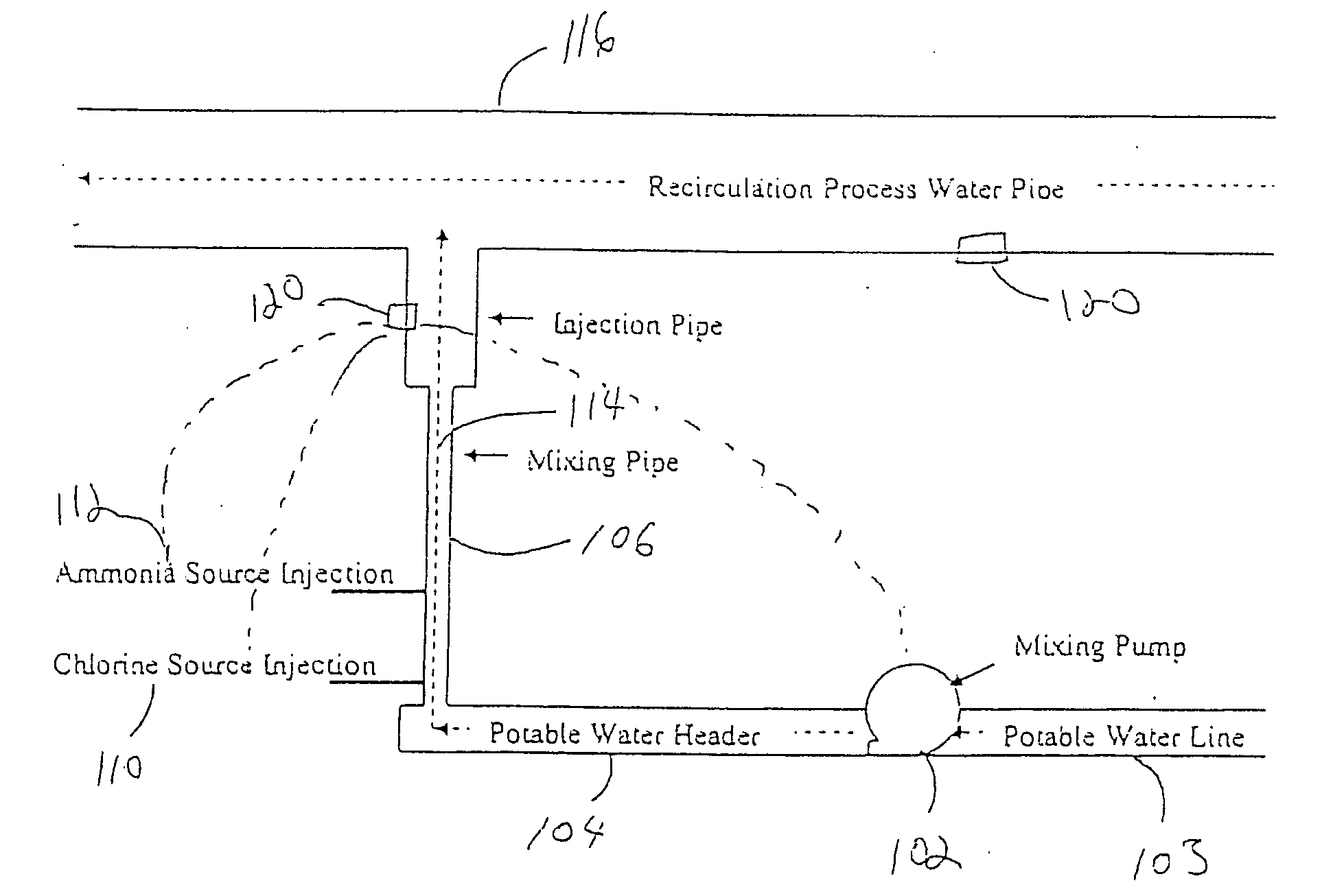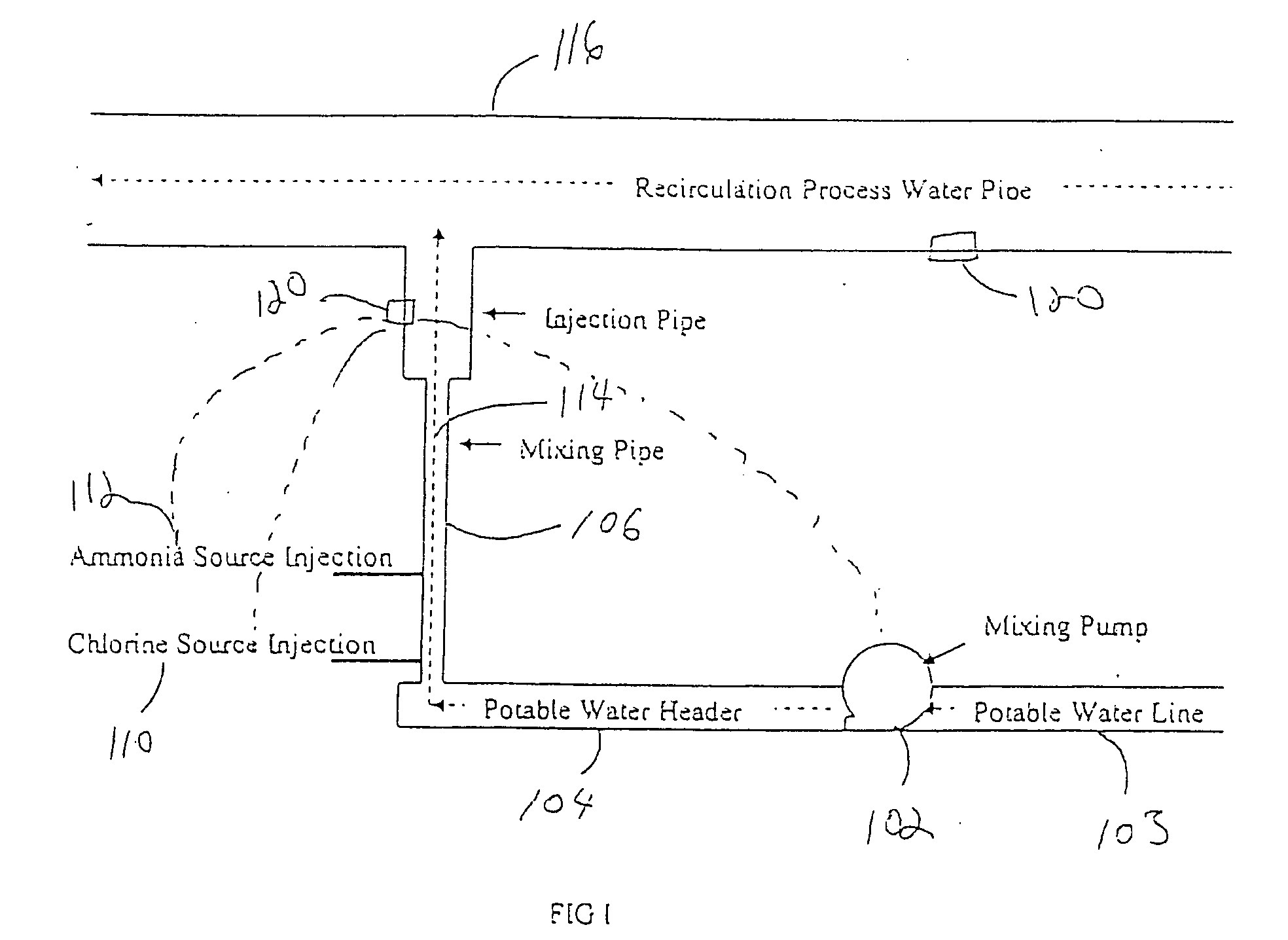Method and apparatus for the production and delivery of monochloramine into water streams
- Summary
- Abstract
- Description
- Claims
- Application Information
AI Technical Summary
Benefits of technology
Problems solved by technology
Method used
Image
Examples
example i
[0047]The monochloramine mixing apparatus according to the invention was incorporated into a poultry processing plant. A substantial quantity of monochloramine was produced according to the invention. The target process water stream consisted of re-circulated process water from a poultry immersion chiller. In testing conducted at the poultry processing plant, concentrations of up to 3000 ppm of monochloramine were successfully added to the Recirculation Process Water Pipe 116, which through dilution in this stream is then diluted to about 50 ppm or less of total chlorine, which includes monochloramine, entering the poultry immersion chiller. With the monitoring control system, this level has been successfully controlled throughout a broad range of processing variations encountered over a sixteen-hour processing day.
example ii
[0048]According to the invention, diluting ammonium chloride to about a 24% solution allows it to be mixed in a tank of potable water and then re-circulated via a side-stream loop to which 12.5% sodium hypochlorite (i.e., bleach) was added to form monochloramine. When the desired ratio of Cl2:N was achieved, the system was tested for monochloramine and metered into the process water. A day tank of up to 3,000 PPM of monochloramine could be safely produced with non-regulated components and reliably fed to a process water stream.
[0049]Although, the above illustrative embodiments show the use of the mixing apparatus in poultry processing plants, it will be appreciated by those skilled in the art that the inventive apparatus allowing for lower regulatory requirements of source chemicals will allow for new uses of monochloramine as a disinfectant to control microbial growth in other organically laden water and other fluid streams. Likewise, it will be appreciated by those skilled in the ...
PUM
| Property | Measurement | Unit |
|---|---|---|
| Length | aaaaa | aaaaa |
| Length | aaaaa | aaaaa |
| Length | aaaaa | aaaaa |
Abstract
Description
Claims
Application Information
 Login to View More
Login to View More - R&D
- Intellectual Property
- Life Sciences
- Materials
- Tech Scout
- Unparalleled Data Quality
- Higher Quality Content
- 60% Fewer Hallucinations
Browse by: Latest US Patents, China's latest patents, Technical Efficacy Thesaurus, Application Domain, Technology Topic, Popular Technical Reports.
© 2025 PatSnap. All rights reserved.Legal|Privacy policy|Modern Slavery Act Transparency Statement|Sitemap|About US| Contact US: help@patsnap.com


